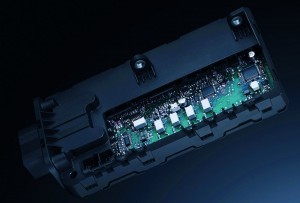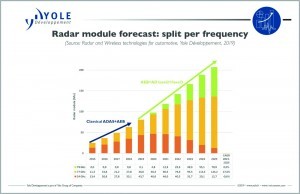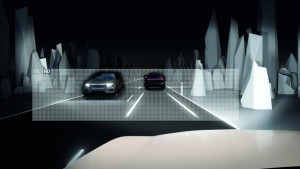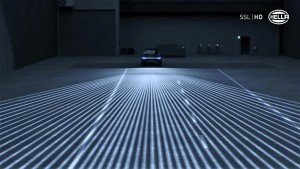The IAA 2021 in Munich showcased a colourful variety of mobility and hit the nerve of the times: new electric cars, bicycles, e-scooters, energy policy and urban planning, digitalization and more were presented together in Munich.(Fig. 1) This kaleidoscope of mobility also showed how the future as a whole needs to be rethought. The overarching goal is the transformation of mobility towards climate neutrality.
Design differentiation through light
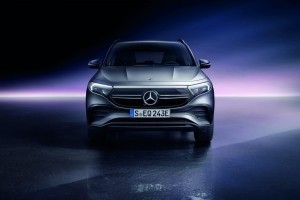 Fig. 2: Light as a design element. A meter-long light strip visually connects the headlights of the Mercedes-Benz EQA (Photo: Daimler Global Media Site)The further development of electromobility is progressing. This brings with it a wide range of opportunities for suppliers. On the one hand, in the area of drive concepts and energy management, such as with battery management systems. On the other hand, new design possibilities are also opening up. As classic engine cooling is no longer required in electric vehicles, the front of the vehicle can be redesigned. Illuminated displays, LED light strips and illuminated logos set new design accents here.
Fig. 2: Light as a design element. A meter-long light strip visually connects the headlights of the Mercedes-Benz EQA (Photo: Daimler Global Media Site)The further development of electromobility is progressing. This brings with it a wide range of opportunities for suppliers. On the one hand, in the area of drive concepts and energy management, such as with battery management systems. On the other hand, new design possibilities are also opening up. As classic engine cooling is no longer required in electric vehicles, the front of the vehicle can be redesigned. Illuminated displays, LED light strips and illuminated logos set new design accents here.
In addition to innovative LED headlights, Hella has developed a characteristic, one-meter-long light strip for the front of the Mercedes EQA(Fig. 2). The light strip ensures an unmistakable appearance on the road and visually connects the headlights. One LED is coupled to each side of the light strip. In addition, a heated radome, i.e. a complex radar cover (radome, abbreviation for radar dome), has been integrated into the front of the vehicle. This protects the front radar sensors from the weather and dirt. In the EQA, it is located behind the car manufacturer's emblem and is integrated into the large panel at the front of the vehicle.
Radar sensors for 360-degree environment perception
With over 90 million 24 GHz sensors, automotive supplier Hella is one of the world's largest suppliers of radar sensors, just like Continental, Bosch, Denso and Delphi (now Aptiv). With the introduction of the 77 GHz radar sensors, the company is now further expanding its position in the field of radar technology. Series production of the latest 77 GHz radar technology for an international car manufacturer has now started at the electronics plant in Hamm. The technology went into series production for the first time in the truck sector last spring. Further launches for passenger cars, including for a German premium manufacturer, as well as for trucks will follow. In addition, the company in Lippstadt is already developing the second 77 GHz radar generation, which will go into series production for another German premium manufacturer in 2024.
The 77 GHz radar sensors support the trend towards automated driving in classes 2+ and 3. Highly efficient hardware and smart software take radar-based 360-degree environment perception to the next level and thus become drivers for safe mobility(Fig. 4).
 Fig. 4: The next generation of 77 GHz radar sensor technology is characterized in particular by the use of the latest antenna and chip technologyTheyconstantly detect the surroundings, recognize pedestrians as well as other road users and objects around the vehicle and deliver reliable results regardless of weather and light influences. 77 GHz technology is becoming increasingly important, particularly with regard to functions such as autonomous parking or automated lane changes, as it offers a significantly wider signal bandwidth compared to 24 GHz and therefore improved environmental resolution. This makes it easier to detect and classify objects such as trucks, cars, two-wheelers and pedestrians on the road.
Fig. 4: The next generation of 77 GHz radar sensor technology is characterized in particular by the use of the latest antenna and chip technologyTheyconstantly detect the surroundings, recognize pedestrians as well as other road users and objects around the vehicle and deliver reliable results regardless of weather and light influences. 77 GHz technology is becoming increasingly important, particularly with regard to functions such as autonomous parking or automated lane changes, as it offers a significantly wider signal bandwidth compared to 24 GHz and therefore improved environmental resolution. This makes it easier to detect and classify objects such as trucks, cars, two-wheelers and pedestrians on the road.
At the heart of the 77 GHz radar sensors is the radar system chip, which is based on RF-CMOS technology. Thanks to the special architecture, digital components and self-diagnosis systems can be integrated on the chip in addition to the components for transmitting and receiving. The radar sensors are also based on a modular, scalable platform concept. This means they support different vehicle architectures and interfaces such as Ethernet.
High-voltage battery management system
Hella also integrated the high-voltage battery management system of the Mercedes-Benz EQA into the vehicle(Fig. 5). This ensures safe and reliable operation of the electric vehicle's almost 70 kWh lithium-ion battery and monitors the battery's voltage, temperature and current. The modular, scalable design of the battery management systems enables integration into the respective powertrains independently of the cell technology used and, on this basis, ensures a high degree of variability for use in different batteries and vehicle models. The main aim is to reduce the energy consumption of vehicles and thus contribute to emission-free mobility.
The changing radar market
In 2021, 77 GHz radar technology with 60.5 million units overtook the previously leading 24 GHz radar technology with 46 million units(Fig. 6). At the same time, 77 GHz technology is becoming increasingly important and, according to a Yole study, will be in second place in 2025 with 70.9 million radar systems.
Solid state lighting/high definition headlight technology
Hella's so-called Matrix SSL/HD technology represents the evolutionary further development of LED matrix systems. The aim is to achieve both a very high light output and a very high range of functions while minimizing the size of the light modules. The SSL Micro-LED clusters are electronic components in which between 100 and 25,000 LED pixels are currently arranged in a very small installation space and can be controlled individually. These LED clusters are combined as a light source in the headlamp and offer new application possibilities thanks to the higher number of pixels. For example, they enable oncoming vehicles to be partially masked and traffic signs to be illuminated(Fig. 7). In terms of perspective, projections of the safety distance can also be realized or pedestrians or cyclists can be highlighted by means of light.
For SUV headlights, Hella has implemented an asymmetrical arrangement for the first time by integrating the SSL/HD module on only one side of the headlight. The module also makes it easy to switch from left-hand to right-hand traffic and vice versa. The high-precision digital pixel switching also provides further customization options such as coming and leaving home animations and other communication functions. For example, symbols can be projected onto the road for interaction with the driver(Fig. 8). To ensure optimum illumination of the road, the SSL/HD functionalities are supplemented by additional components such as BiLED and matrix modules.
 Fig. 3: Autonomous shuttle buses at the IAA 21 in Munich
Fig. 3: Autonomous shuttle buses at the IAA 21 in Munich
To the point
- The diversity of mobility was evident at this year's IAA with 98 car manufacturers, 75 bicycle brands, 152 suppliers, numerous tech companies and 78 start-ups
- As classic engine cooling is no longer required for electric vehicles, new design elements can be realized such as illuminated displays, LED light strips and illuminated logos
- 77 GHz radar modules are becoming increasingly important for level 2+ and 3 automated driving and higher for 360-degree environment detection. According to a Yole study, growth rates are expected to be 27% CAAGR from 2015-2025.
- High-voltage battery management systems ensure the reliable functioning of batteries in electric, full and plug-in hybrid vehicles
- Solid State Lighting | High Definition headlamp technology enables the function of glare-free high beam, i.e. partial blanking out of oncoming vehicles.
The concept of the new IAA in Munich showed the enormous diversity and range of mobility. The integration of the city of Munich with decentralized action areas (Open Spaces) opened up the flanks for protesters and opponents on the one hand, but on the other hand took advantage of the opportunities to bring the mobility of the future closer to large sections of the population. 400,000 visitors after a forced break due to coronavirus speak for themselves. The next date of September 5 to 10, 2023 has already been set.
I wish you productive fall days
Best regards to you
Hans-Joachim Friedrichkeit


